Experience the Power of Productivity
Make your team 40% more efficient. Set up your account in just 2 minutes!
Identify what improves output and efficiency using productivity intelligence based on real work activity.
Get clear visibility into productivity, utilization, and performance so teams can act faster and improve outcomes.
Active users
Hours Tracked
Monitor employee activity as it happens, allowing you to make timely adjustments and keep projects on track efficiently.

Automatically capture time-stamped screenshots to verify tasks, tools used, and active engagement.
Monitor how much time is spent working versus idle to better understand focus and efficiency.
Get clear reports about your team’s work. Use these to make smart choices about how to run things better and plan for the future.
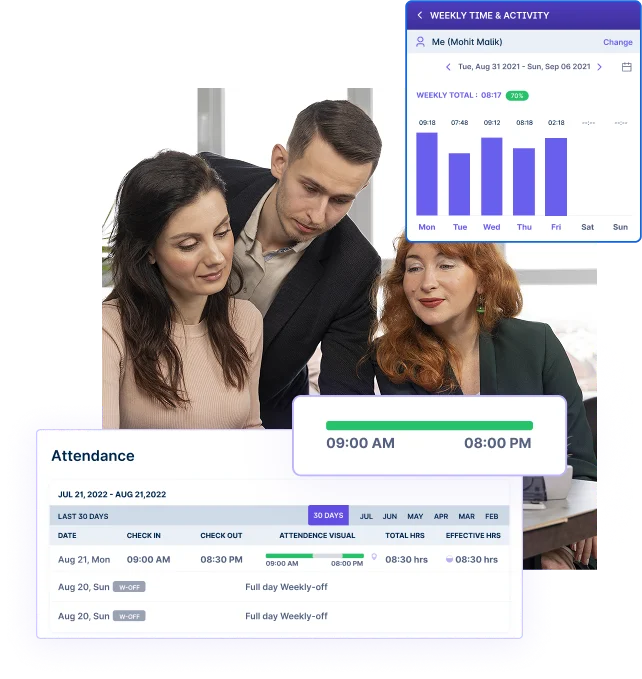
Generate detailed reports on hours worked, attendance patterns, and shift compliance for accurate record keeping.
Generate customizable reports that adapt to your specific needs, offering real-time data to support strategic decisions.
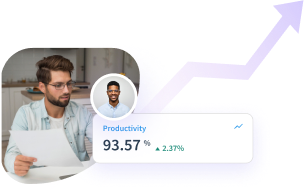

A multi-national marketing firm, boosted overall efficiency.
Increase Your Team Productivity
A Delhi-based startup achieved 30%+ increased ROI with Workstatus.
Enhance Your Business ROIUtilize scheduling insights to allocate resources efficiently, ensuring optimal coverage and reducing scheduling conflicts.
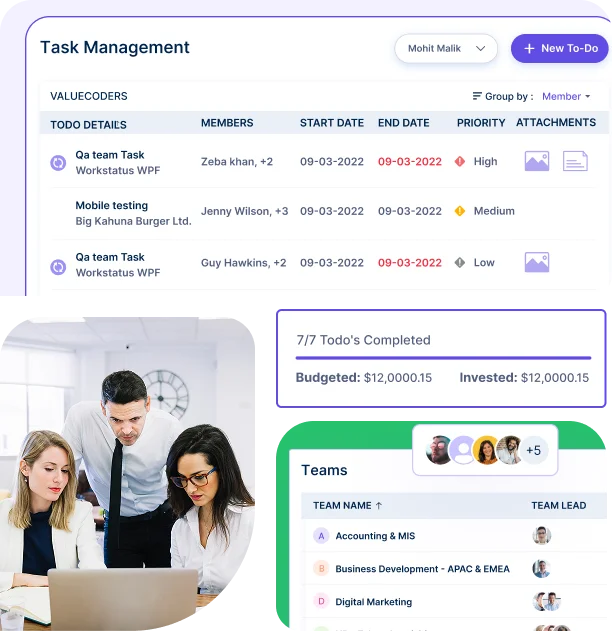
Distribute tasks evenly across your workforce by analyzing schedules, preventing burnout, and improving team efficiency.
Adjust team assignments in real-time based on workload data, availability, and project demands.
Easily monitor performance across remote, hybrid, and in-office staff with synced, cross-device analytics.
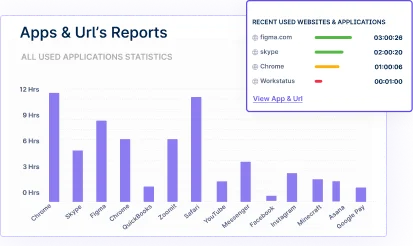
Real-time insights across every work setup
A unified intelligence layer that connects your people, projects, and operations.
Unlock workforce potential with digital habits, workload signals, and focus trends-without micromanaging.
Real-time visibility into progress, blockers, delivery estimates, and verified balance for every project.
Clear visibility into billable hours and invoice-ready time, ensuring accurate billing and healthier margins.
Cross-team insights into capacity, utilization, and performance health across roles, teams, and departments.
GPS & geofenced check-ins, biometric verification, shift scheduling, payroll, and compliance-all in one place.
Work together effortlessly, no matter where your team is located, with tools that keep communication and collaboration smooth.

Stay connected and accountable

Balance productivity everywhere

Empower field team efficiency

Optimize office productivity
From IT to healthcare, retail to manufacturing, Workstatus adapts to meet your industry’s unique needs.


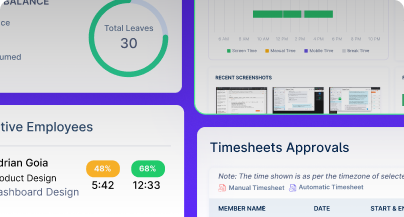
We provide clarity, no matter the industry, with:
Analyze and assess tools side by side to choose the best fit for your team’s needs and goals.
From time tracking to advanced analytics, Workstatus has everything your business needs to elevate operations.
Workstatus fits seamlessly into your existing tools, connecting time, tasks, and insights without changing how your teams work.
Workforce analytics software like Workstatus helps businesses measure team performance by tracking work activities and completion rates across all departments.
It monitors productivity and compares performance levels between different teams automatically.
Workforce management software gives managers daily data about how each team performs tasks and meets deadlines.
This helps identify strong teams and those needing extra support or training.
Key performance measurement features include:
This data-driven approach transforms guesswork into strategic workforce management decisions.
Collecting key data points that show complete employee productivity is essential for any organization.
You can use tools like Workstatus that tracks both quantity and quality of work for accurate measurements.
Essential productivity data points include:
Additional measurement areas cover:
Employee productivity data enables managers to make informed decisions about performance improvement and resource optimization.
By analyzing real-time work data, potential signs of overwork or underutilization are flagged before they affect team performance.
Time tracking software like Workstatus can easily identify overwork patterns through:
Underutilization detection includes:
Managers get notifications when the system detects worrying patterns. This early warning helps prevent employee burnout while keeping all team members productive and engaged.
Early pattern detection allows managers to maintain optimal workforce balance and prevent costly productivity issues.
To understand how team members perform relative to each other, productivity tracking tools can be used to compare their activity levels accurately and fairly.
Such tools provide clear insights into individual contributions and help identify where support or recognition is needed.
Employee productivity tracking compares activity through work metrics:
Additional comparison areas include:
The system shows these comparisons in visual dashboards that make differences clear.
You can use this information for coaching, workload adjustments, or recognizing top performers.
Employee scheduling software like Workstatus uses real time usage data to help managers plan resources better.
The system analyzes how long tasks actually take versus estimates, improving future project planning.
Workforce planning and analytics support resource planning through historical analysis:
Future planning capabilities include:
Project timeline predictions based on past performance
Managers can use actual historical data instead of guessing to create realistic plans and budgets.
Accurate time usage data transforms resource planning from estimates into precise, cost-effective business strategies.
Employee analytics software tools measure engagement by tracking how actively employees participate in their work throughout the day.
The system monitors work patterns that show high engagement versus signs of distraction.
Employee monitoring software tracks engagement through key indicators:
This information helps managers provide appropriate support, recognition, or coaching to maintain high engagement across the team.
Organizations can use workload analytics to gain a clear view of team capacity, task distribution, and performance trends.
This data-driven approach helps ensure work is assigned fairly and efficiently across the team.
You can balance workloads through data-driven approaches:
This leads to better team morale, improved productivity, and consistent work quality across all team members.
Workforce analytics involves analyzing employee performance, productivity, and behavior to make better business decisions. Workstatus simplifies this with real-time insights.
With Workstatus, you can make data-backed decisions to boost workforce efficiency.
Workstatus offers detailed analytics to spot inefficiencies and enhance performance across your teams.
These insights help managers proactively guide their teams for better outcomes.
Yes, Workstatus provides objective data to assess employee performance fairly.
With this transparency, it’s easier to identify who needs support or redirection.
Absolutely. Workstatus keeps you informed with real-time visibility into your team’s activities.
This visibility ensures better accountability and operational control.
Yes, Workstatus is ideal for remote and distributed teams.
It gives you a unified view of remote teams without micromanaging.
Workstatus offers multiple customizable reports to help you dig deep into workforce performance.
These reports make it easy to monitor progress, optimize resources, and justify decisions with data.
Managing your workforce, projects, and reports gets simple & effective.
Managing your workforce, projects, and reports gets simple & effective.

Workstatus is highly rated on Trustpilot for reliability, ease of use, and workforce visibility.
Explore MoreGet detailed and clean activity reports of your team.